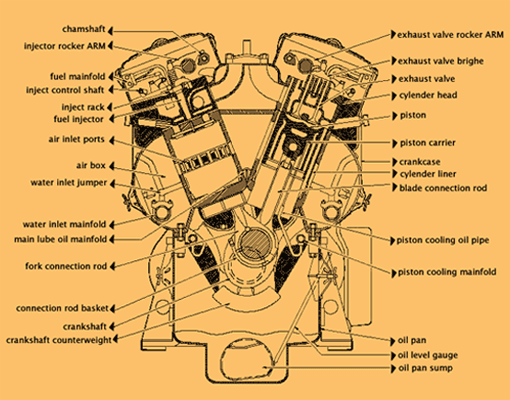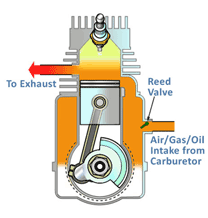
The engine lubrication system is designed to lubricate, cool the engine by carrying heat away from the moving parts and keep the engine clean by delivering clean oil at the correct temperature and pressure. The oil from the sump is sucked into the pump and forced through an oil filter under pressure to the main bearings and the oil pressure gauge. From the main bearings, the oil passes into drilled passages in the crankshaft and the big-end bearings of the connecting rod. The oil fling dispersed by the rotating crankshaft lubricates the cylinder walls and piston-pin bearings. The excess oil is scraped off by the scraper rings on the piston. The engine oil also lubricates camshaft bearings and the timing chain or gears on the camshaft drive. The excess oil in the system then drains back to the sump.
High quality engine oil is formulated with the proper base stocks and additive package to provide protection for both gasoline and diesel powered engines in severe service applications. Engine oil must meet standards that are set by API, ACEA, IS, OEM etc. API is the American Petroleum Institutes standards for motor oil & ACEA is the European standards. The API service classes have two general classifications: S for "Service" (orgininating from Spark ignition) (typical passenger cars and light trucks using gasoline engines), and C for "Commercial" (originating from Compression ignition) (typical diesel equipment). The latest API service standard designation is SM for gasoline automobile and light-truck engines. The SM standard refers to a group of laboratory and engine tests, including the latest series for control of high-temperature deposits. Current API service categories include SM, SL and SJ for gasoline engines. There are seven diesel engine service designations which are current: CJ-4, CI-4 Plus, CI-4, CH-4, CG-4, CF-4, and CF.
It is possible for an oil to conform to both the gasoline and diesel standards. Combined API Service Classification motor oils are highly effective at reducing and controlling sludge and varnish deposits, acid and foam formation and have improved oxidation stability.

Engine Lubrication SystemIn two stroke engines, all four events viz. intake, compression, combustion and exhaust; are integrated into one simple downward stroke, and one upward stroke. Intake and exhaust are both integrated into the compressionand combustion movement of the piston, eliminating the need for valves. The lubrication system in a 2 - stroke engine may either have a premix system or a separate oil injection system. In the former, lubricating oil is mixed while filling petrol in a particular proportion. Whereas in case of a separate oil injection system, the lube tank is simply filled and there is an in - built unit in the vehicle which controls the flow of oil in petrol. JASO: FC specification has been issued by Japanese Automobile Standard Organization for two stroke engines. API service standard designation is TC. Both JASO:FC and API:TC are Low Smoke Oils. Over the years, these specifications have gained importance because of its special emphasis on controlling smoke.